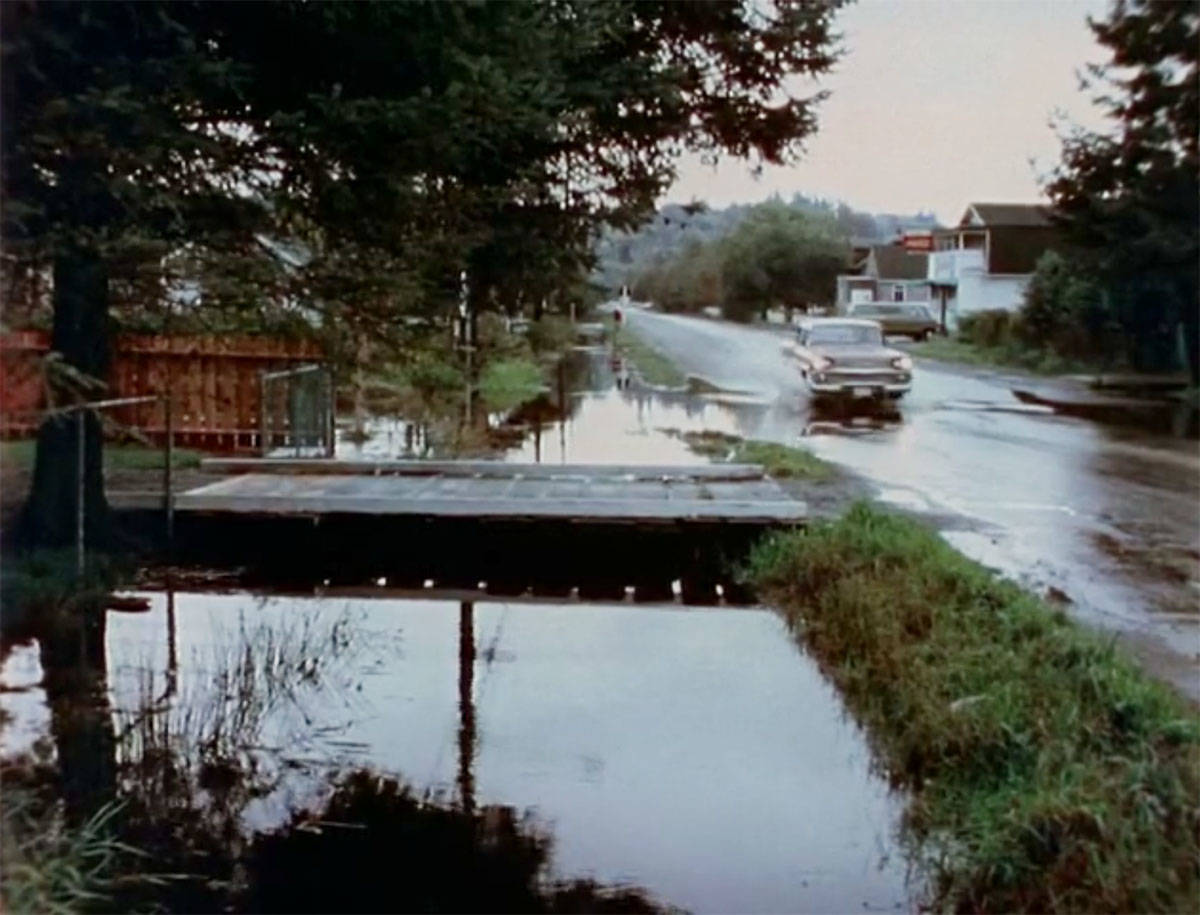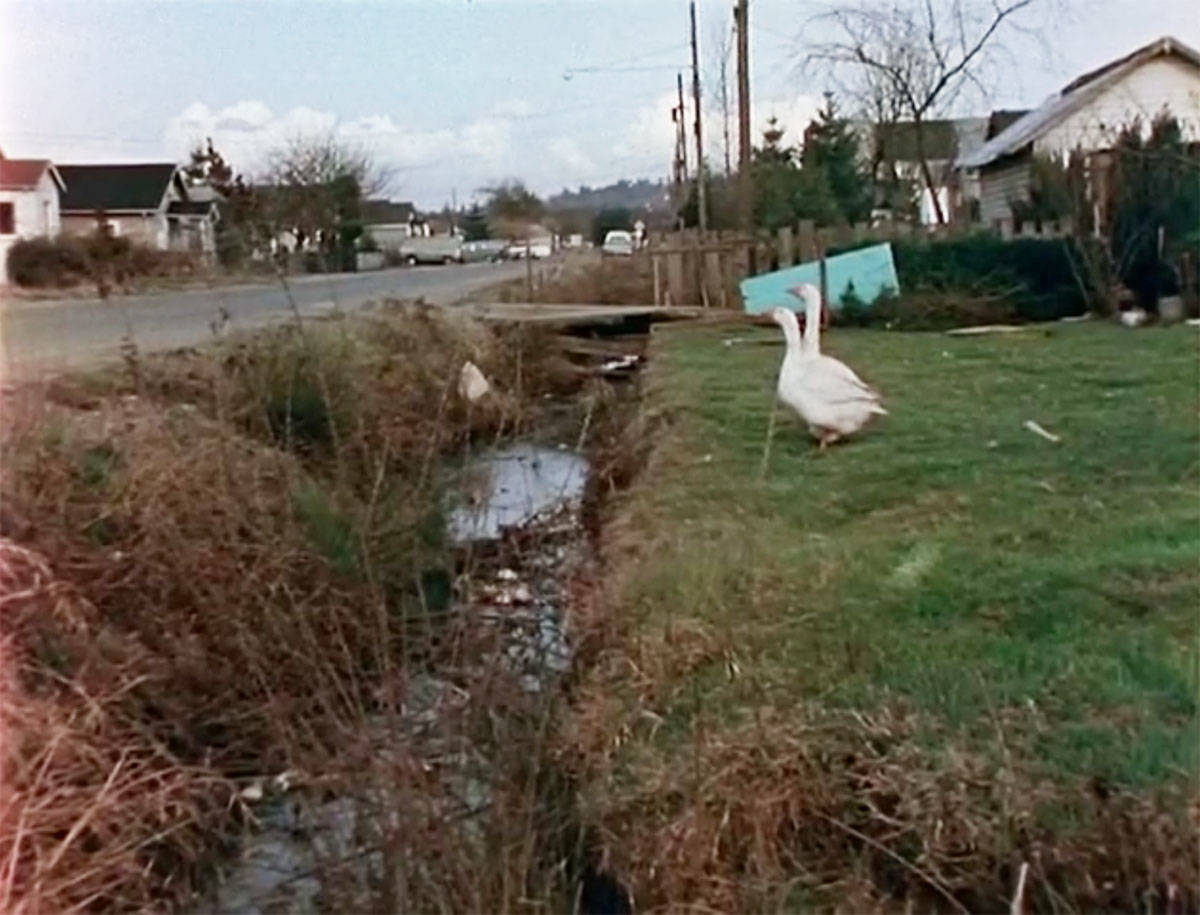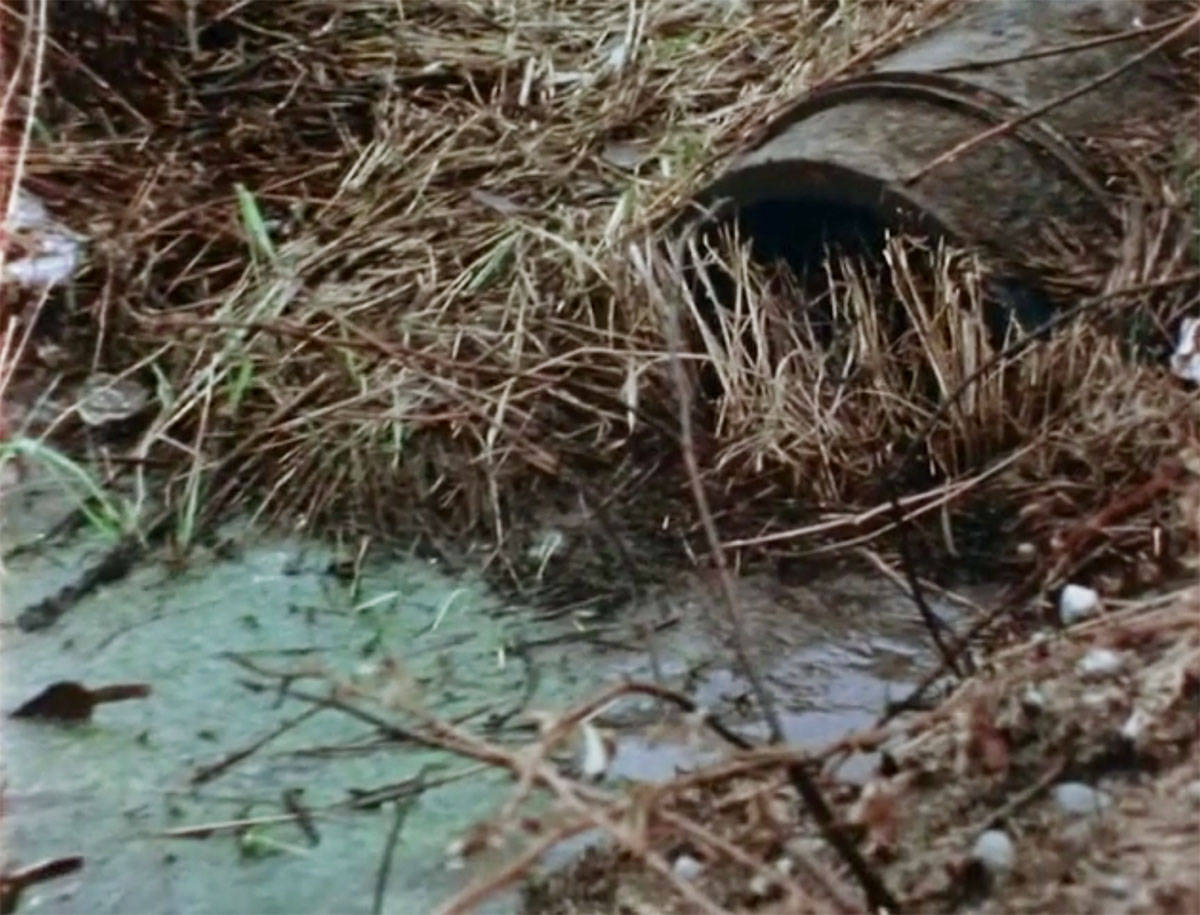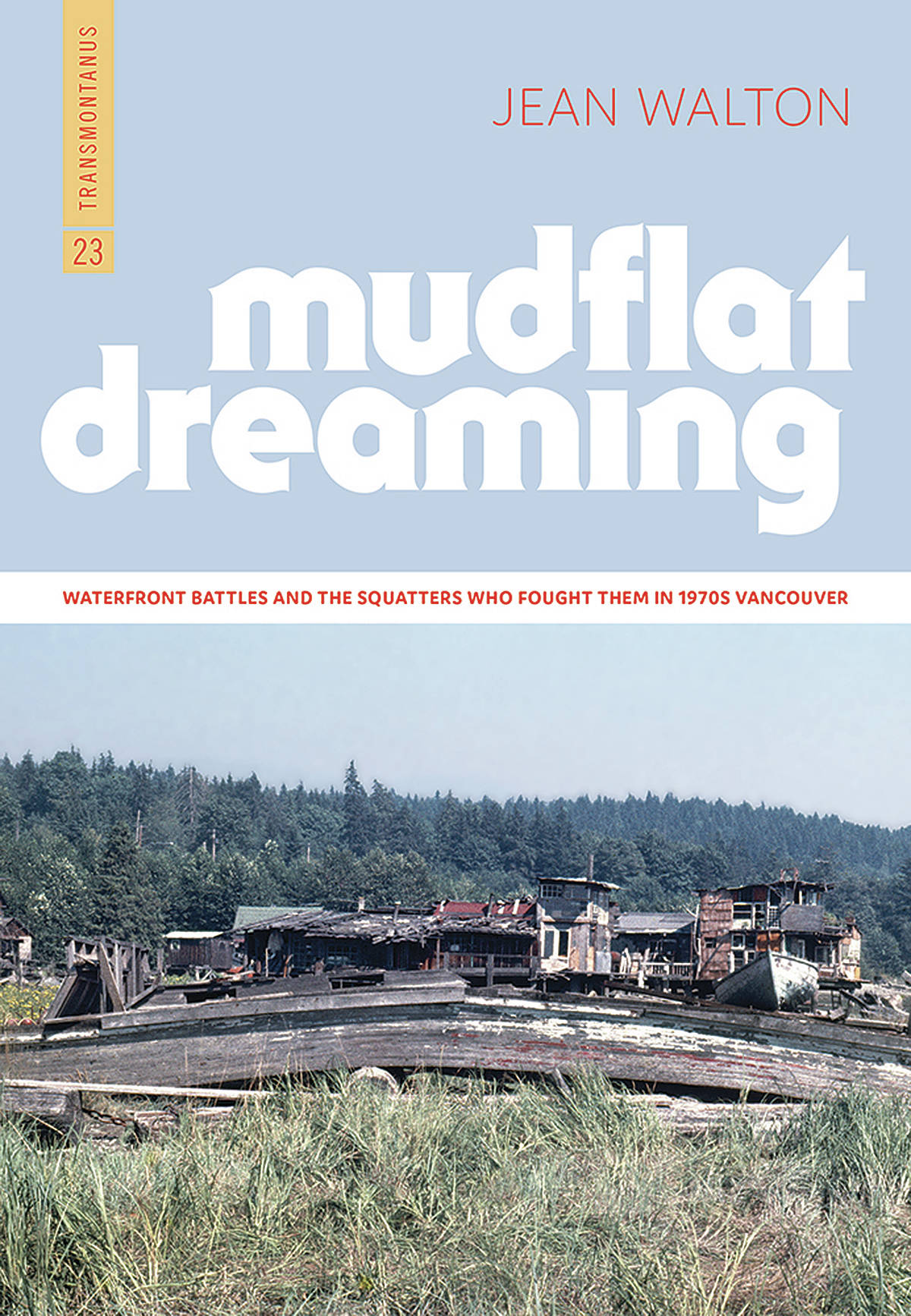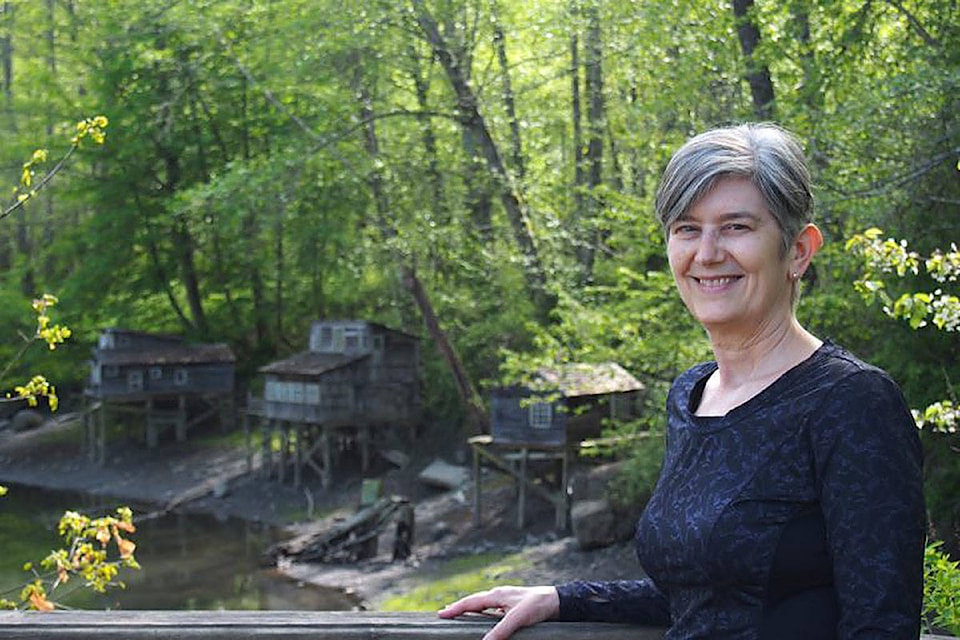A dirty chapter of Bridgeview history is explored in a new book written by Jean Walton, who lived “up the hill” from the Surrey community in the 1970s and later saw how its residents struggled with Third World-like conditions.
For years they fought city hall to have proper sewers built, because their septic tanks kept overflowing into the drainage ditches near their homes, but then-mayor Bill Vander Zalm and municipal councillors balked, in light of more industrial plans for the area.
“It was a very unsanitary situation,” recalled Walton, whose Mudflat Dreaming book (New Star Books) is subtitled “Waterfront Battles and the Squatters Who Fought Them in the 1970s Vancouver.”
The mid-’70s situation in Bridgeview was documented in Some People Have to Suffer, produced by the National Film Board as part of a Challenge for Change program to bring political concerns to light.
The movie was a source of inspiration for Walton, who in 1970, at age 13, moved with her family to Surrey.
“We took over my grandparents’ motel, which was called Wally’s Motel on the King George Highway,” Walton told the Now-Leader in a phone interview from the Rhode Island city of Providence, where she now lives. “Not Whalley, the community, because my grandfather went by the nickname Wally, but it was meant to kind of rhyme with Whalley, the area, because we were right in Whalley.
“We moved away from it in around ‘73 or ‘74,” she continued, “and I think the A-frame was taken away soon after that, and you know, the motel is long gone. The Skytrain kind of came through that area and moved everything around.”
CLICK HERE to read “Making Mudflat Dreaming a Reality,” a blog post at newstarbooks.com.
https://blackpress.newsengin.com/gps2/uploads/14842109/RGB_mudflatdreamingcover.jpg
Mudflat Dreaming, part of New Star’s Transmontanus series of books about “the north-western margins of the continent,” combines Walton’s portrait of Bridgeview in the 1970s with the story of a counter-culture village of float homes in North Vancouver at the time.
“In Surrey,” Walton said, “it was a working-class community that very much wanted to be part of the civic infrastructure, and wanted to enjoy the same kind of amenities that the rest of my schoolmates had, in their suburban houses in Whalley and Guildford, and yet they seemed to be treated as though they were squatters by the local council.
“So for the book I found that it was so dynamic to move back and forth between these two situations (in Bridgeview and in North Vancouver) and tell the stories simultaneously, and each time I found a new strand of development or story, a similar strand or side of it would come up on the other side.”
Walton, a professor at the University of Rhode Island, teaches courses on literature of the First World War, activist documentary, ’70s pop culture films and “all waves of feminist theory,” according to a bio posted to newstarbooks.com.
While living in Surrey as a teen, she worked for a weekly newspaper called the Surrey-Delta Messenger.
“I was 16 at the time,” Walton recalled. “I went there asking if I could do anything for them and the publisher hired me, even though I was a teenager. I did some of the photography, but mostly darkroom work and I also wrote some human-interest stories. I had a column called ‘Guildford Corner,’ and that meant covering little events happening at (Guildford Town Centre).”
For research purposes, a publicist with the NFB sent the Now-Leader a private online link to watch Some People Have to Suffer, which the agency has not yet made available for public viewing at nfb.ca.
In response, publicist Katja De Bock explained in an email: “If budget allows, our collection curator, Albert Ohayon, is considering to shortlist the film for digital release in the next fiscal year, which starts in April 2019.”
In the 42-minute film, Bridgeview residents demand answers from their councillors, with few results. Notes a bio for the documentary: “When the film was shown at the Habitat conference in Vancouver, 1976, press coverage noted: ‘The Third World is merely twenty miles from the site of Habitat’” – in Surrey.
Said Walton: “Surreyites deserve to know that little piece of the city’s history, and it’s so colourful, that movie.”
Some People Have to Suffer can be viewed at Surrey Archives, 17671 56th Ave. “Someone just has to say they’d like to watch it and we’ll set it up on a computer or TV for them,” Ryan Gallagher, manager of heritage administration, told the Now-Leader.
In the 1970s and beyond, Walton said she was struck by the will of Bridgeview residents to remain living in the community.
“They were determined to stay in the houses that they either built or had put a lot of work into, their life savings in some cases, and it was affordable housing,” Walton said. “It was near the river, and in the film you see Otto Wittenberg, one of the local activists, saying that he wants to preserve the waterfront access there, so Surreyites could still have access to the riverfront, and that it wouldn’t be completely surrounded by industry. That interested me as a kind of burgeoning environmental concern, too, and that environmentalism was continued by the NFB program that was working with them, and the Surrey Project took an active role in stopping a lot of development throughout the whole municipality of Surrey, and elsewhere, from spoiling more of the natural surroundings.”
Walton said she returned to Surrey earlier this decade, and attended a Bridgeview Days celebration at the community centre there.
“I met with a couple of people there but it was so noisy that I didn’t get great interviews,” she recalled. “But I was very happy to see that, first of all, the neighbourhood is still there, people still live there, even though they’re beset by some of the same problems that faced them in the 1960s and 70s.
“When that film was made about them,” she continued, “Vander Zalm’s city council was not so interested in helping them remain there, so they kind of found ways not to help them improve the situation, not to provide the sewers, because of course they wanted to industrialize the whole area, to have industry on that entire riverfront. They were trying to force them out one way or another. So the people there are still basically a residential community, even though it’s pretty much surrounded by industry.”
